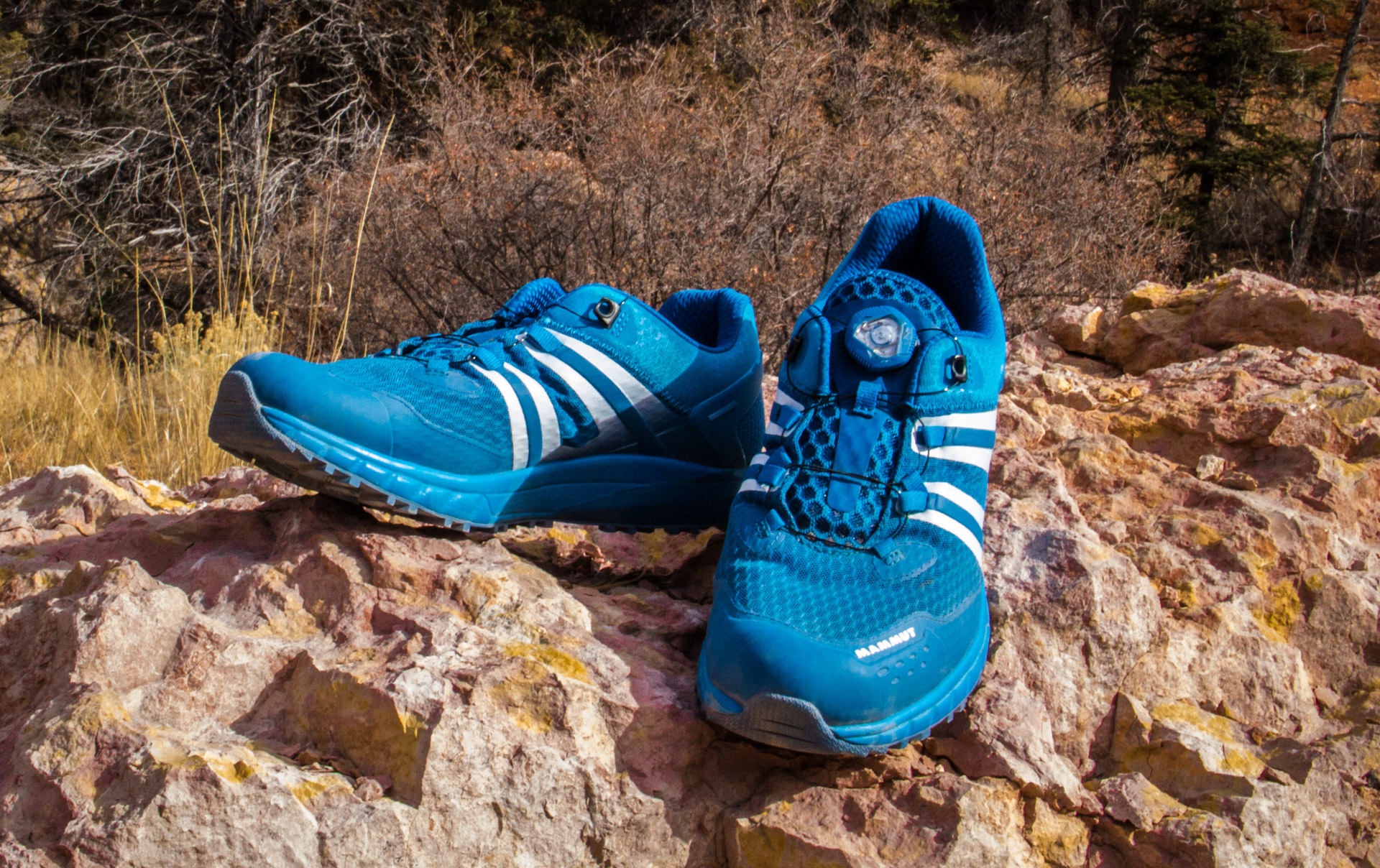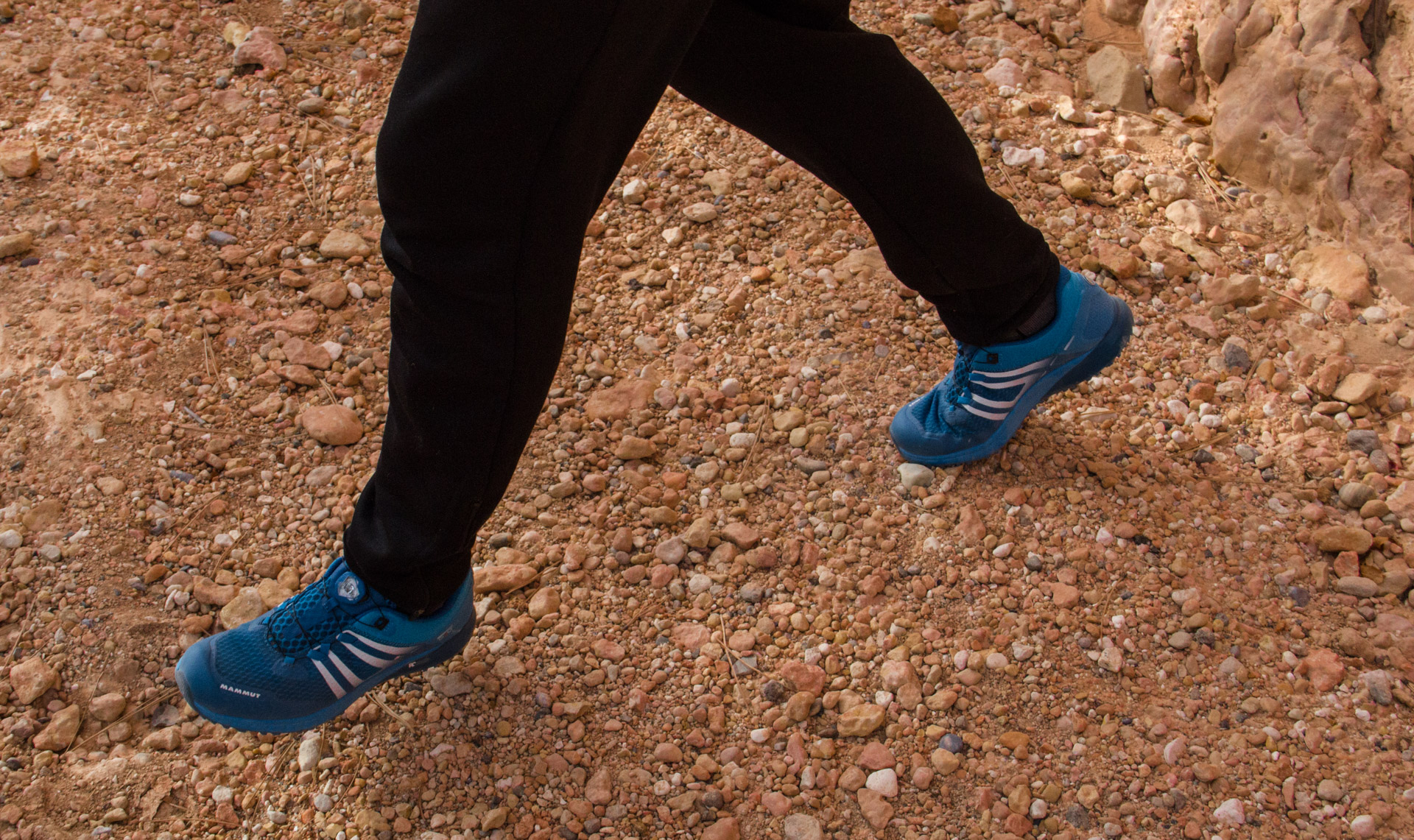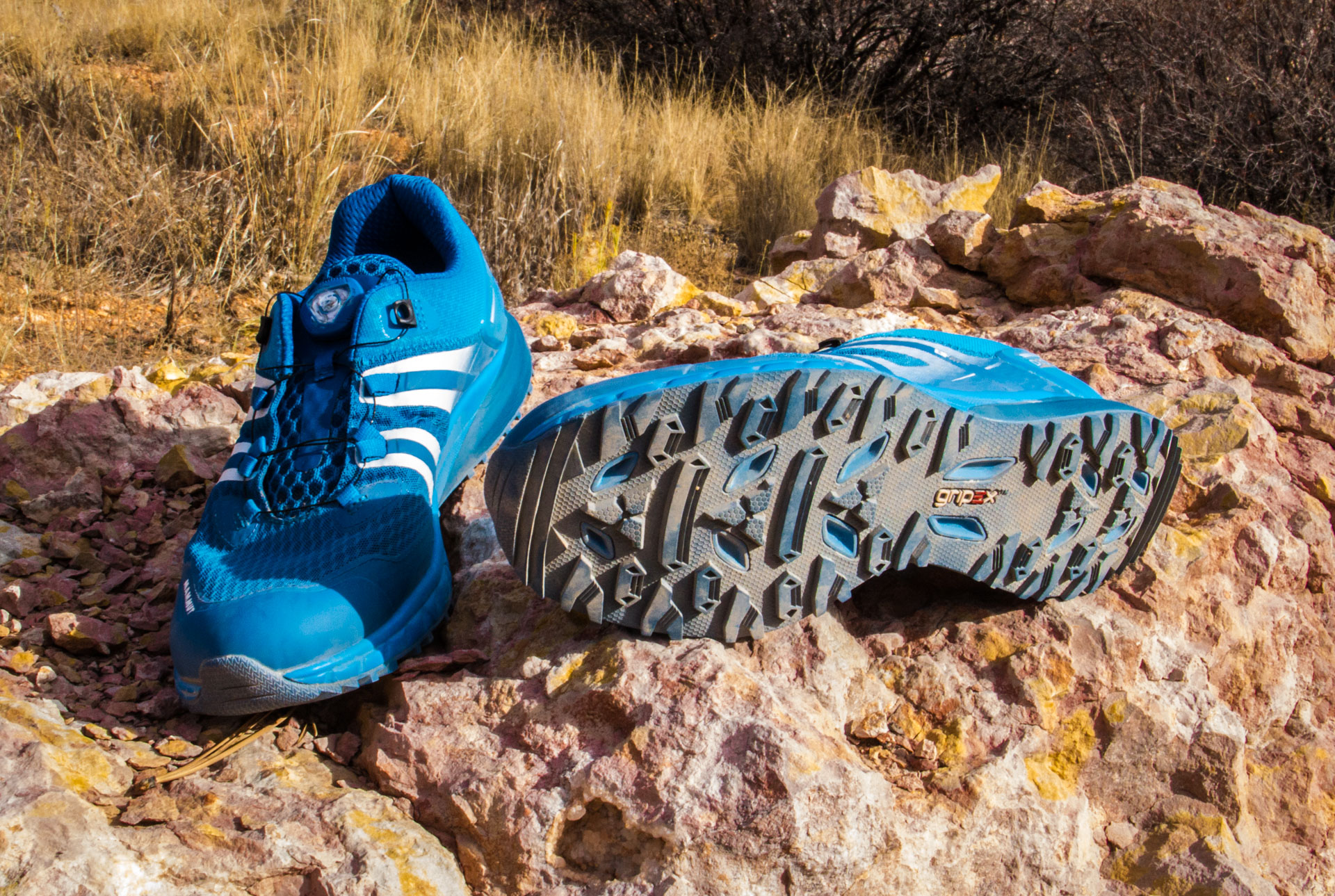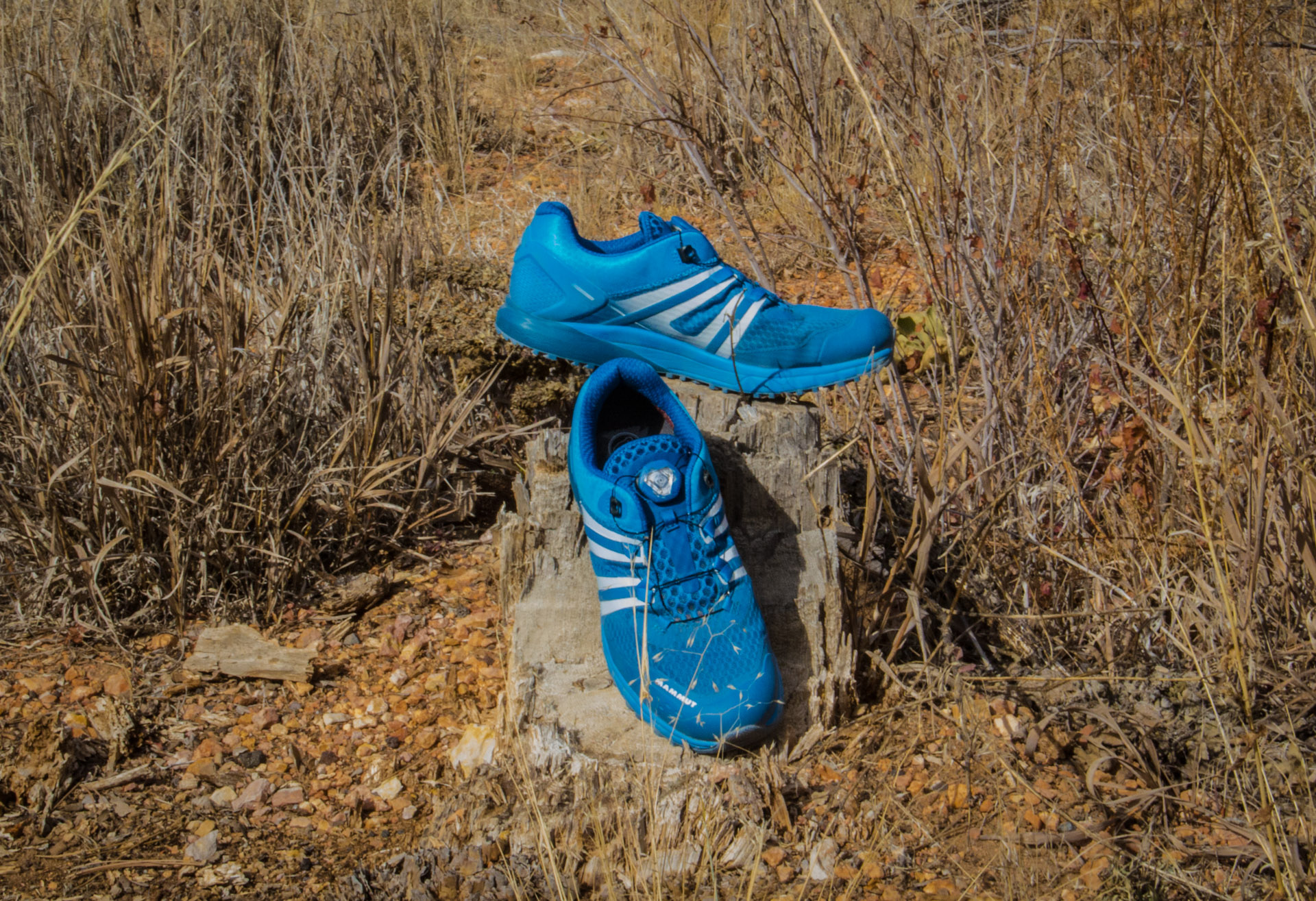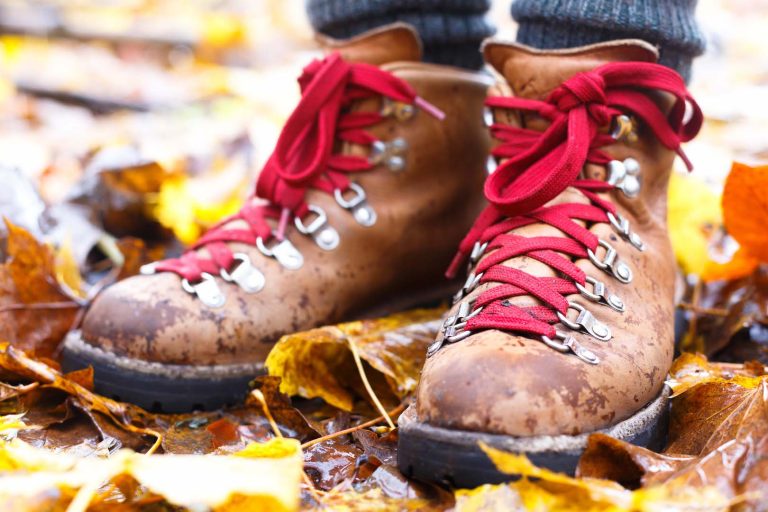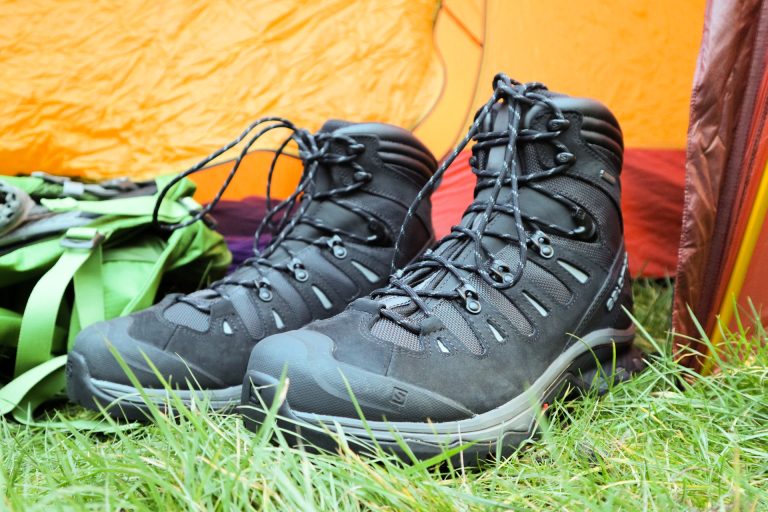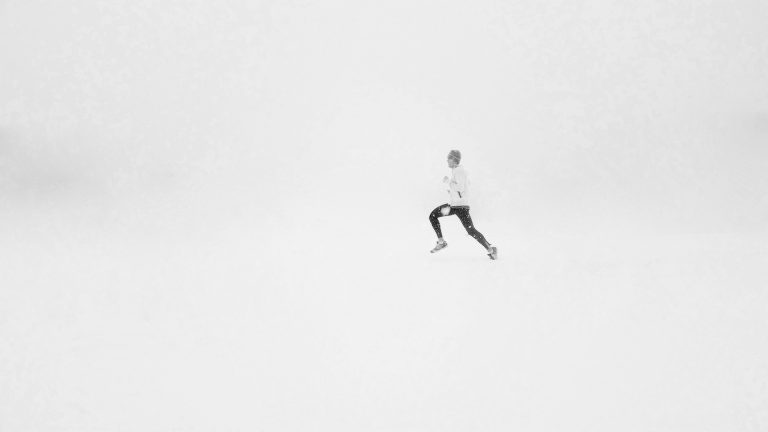The Mammut MTR 201-II Boa Low Men trail running shoe is, so the makers claim, the fastest technical trail competition shoe. It’s designed to perform on mountainous trails the world over.
The climbs of Bryce Canyon in Southern Utah were to be the place where I put these shoes to the test, both running and hiking for several days.
Design
The first thing you notice about the Mammut MTR 201-II Boa (well, aside from the bright colour) is the dial fastening system that’s replaced the traditional laces. This BOA system makes up part of the shoe’s name. It’s common on many snowboard boots, sometimes on gloves as well, and is kind of similar to the short-lived Reebok Disc lacing system, if you’re old enough to remember the early 1990s.
The Mammut MTR 201-II Boa Low Men trail running shoes are also very light – part of the reason I chose them – weighing in at just 329g (men’s 9.5) per shoe. Despite this light weight, the shoes feel really sturdy and solid. The all-round fit felt really good on my foot (which is neither particularly wide or narrow), whether at pace or simply hiking. Memo Foam lines the heel cup, which can only have added to the comfort.
The upper shoe features what Mammut call 3-D Textile. This is a honeycomb structured, multi-layer fabric which is lightweight, abrasion resistant, moisture absorbent and quick-drying. On the sole, Mammut have used Griptex Sonar technology, which sounds like something from a submarine, but it means that I never felt my footing slip once. Inside, something Mammut call Rolling Concept cushioning is designed to encourage your foot to roll naturally, reducing both fatigue, and the danger of a twisted ankle.
Performance
I was really pleased with how well the Boa lacing system worked on the Mammut MTR 201-II trail running shoes. As a snowboarder who’s been let down by Boa’s systems on two pairs of boots in the past, I was keen to see how well they did on a trail running shoe, and the verdict is good. There was none of the premature slackening off that I’ve experienced in the past. All I needed to do was tighten them once at the start of each day.
I also found that the Boa’s lacing system felt like it was the right shape for my foot. Unlike traditional lacing systems that can be tightened in some areas and slackened in others, Boas tend to be equally as tight or loose in all places. I certainly felt the benefit of this.

